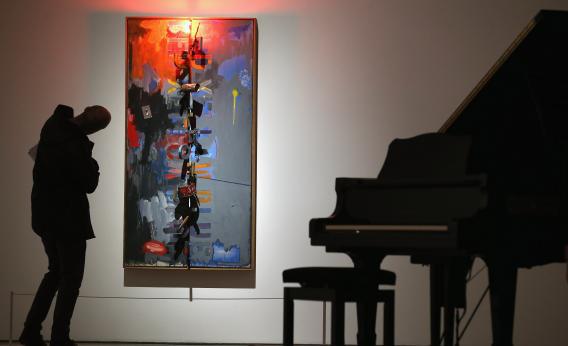Art heists are supposed to be daring. They are supposed to be global capers where robbers dressed in all black, speak an exotic, but non-specific form of accented English, and race Audis through the streets of Europe. This is what movies are made of–mystery and glamour.
The case of James Meyer was not one of those. His art heist had all of the artistry of an accountant cooking the books.
Meyer was indicted today for the theft of 22 works of art by pop artist Jasper Johns. Johns was also Meyer’s boss, whom he worked for as an assistant for 25 years. An artist himself, Meyer “answered the artist’s phone, stretched his canvases, bought his paintbrushes and even drew lines on his canvases,” according to the New York Times.
In 2006, however, Meyer began swiping his boss’s works from his Connecticut studio and over the next six years stole almost two dozens pieces, smuggling them to a New York gallery to put them on the open market.
Here’s an NBC News account of how he did it:
The pilfered work included some pieces that Johns had not even completed, officials said. He had not given permission for any of them to be sold. But to make it seem as though he had, Meyer allegedly created fake inventory numbers for the stolen pieces and forged pages in a loose-leaf binder that served as a register of all of Johns’ artwork, even going so far as to photograph the pages and give them to prospective buyers.
Loose-leaf binders? The Thomas Crown Affair this was not. Meyer was able to pocket more $3 million from the sales, after splitting the proceeds with the gallery. To cover his tracks, the pieces were sold with the agreement that the buyer would not exhibit, loan or resell the works for at least eight years, Manhattan U.S. Attorney Preet Bharara said in a statement.
